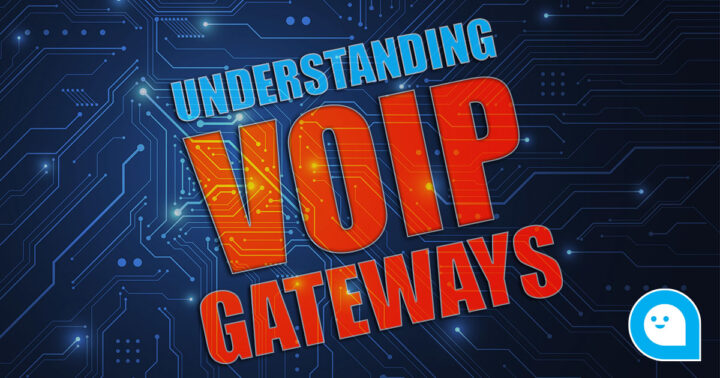In today’s fast-paced business environment, clear, reliable communication is non-negotiable. Whether you’re a small enterprise or a large corporation, the ability to communicate seamlessly can be the difference between success and missed opportunities. This is where VoIP (Voice over Internet Protocol) gateways come into play—specifically, ClearlyIP VoIP Gateways, which are designed to ensure your business stays connected, productive, and efficient.
What is a VoIP Gateway?
A VoIP gateway is a device that bridges traditional telephone systems and modern VoIP systems. It translates analog signals from your traditional phone lines into digital data that can be transmitted over the internet. This conversion allows businesses to continue using their existing analog equipment, like telephones and fax machines, while benefiting from the advanced features and cost savings offered by VoIP technology.
How Does a VoIP Gateway Work?
To understand the operation of a VoIP gateway, it’s important to break down its functions into key technical processes:
1. Signal Conversion
At the heart of a VoIP gateway’s functionality is its ability to convert signals:
- Analog-to-Digital Conversion (ADC): For analog telephony systems, such as traditional landline phones, the VoIP gateway performs an Analog-to-Digital Conversion. This process involves sampling the analog voice signal at a high frequency and then quantizing the samples into digital data. The resulting digital signal is encoded into a format suitable for IP transmission, typically using codecs like G.711, G.729, or G.722.
- Digital-to-Analog Conversion (DAC): Conversely, when receiving VoIP calls destined for an analog phone, the gateway converts the incoming digital data back into an analog signal through Digital-to-Analog Conversion, ensuring that the voice can be heard clearly on the analog device.
- Digital-to-Digital Conversion: For digital telephony systems, such as ISDN (Integrated Services Digital Network) or T1/E1 lines, the gateway manages Digital-to-Digital Conversion. This involves converting the digital signal from the ISDN or T1/E1 system into IP-compatible digital packets without altering the inherent digital nature of the signal.
2. Packetization
Once the voice signal is converted to a digital format, the gateway segments the data into smaller packets. Each packet includes a portion of the voice data, along with routing information, such as the source and destination IP addresses. This process, known as packetization, is crucial for transmitting voice over an IP network.
3. Compression and Codec Handling
VoIP gateways support various codecs to optimize the transmission of voice packets. Codecs compress the voice data, reducing the bandwidth required for transmission. Some commonly supported codecs include:
- G.711: Provides high-quality audio but requires more bandwidth.
- G.729: Offers good audio quality with lower bandwidth requirements, making it ideal for networks with limited capacity.
- G.722: A high-definition codec that delivers superior audio quality.
The gateway selects the appropriate codec based on network conditions and the specific requirements of the call.
4. Protocol Conversion and Signaling
A crucial role of the VoIP gateway is protocol conversion and signaling management. Traditional telephony systems use signaling protocols like SS7 (Signaling System No. 7) or PRI (Primary Rate Interface) for managing call setup, maintenance, and teardown. VoIP systems, on the other hand, use IP-based signaling protocols such as SIP (Session Initiation Protocol) or H.323.
- Signaling Translation: The gateway translates between these different signaling protocols, allowing seamless communication between traditional and VoIP networks. For example, when an incoming call arrives via a traditional PSTN (Public Switched Telephone Network) line, the gateway translates the SS7 signaling into SIP, allowing the VoIP system to handle the call.
5. Routing and Call Management
Once the signal and protocol conversions are complete, the gateway is responsible for routing the call to its final destination. This could involve:
- Directing calls from an analog or digital phone to a VoIP endpoint: The gateway routes the packets over the IP network to the appropriate SIP server or VoIP device.
- Routing VoIP calls to the PSTN: When a VoIP user makes a call to a traditional phone number, the gateway converts the IP packets back into analog or digital signals and routes them through the PSTN.
6. Network Management and Quality of Service (QoS)
VoIP gateways also play a crucial role in managing network traffic to ensure high-quality voice communication. They often include features for:
- Echo Cancellation: Removes echoes that can occur during voice transmission, improving call quality.
- Jitter Buffering: Compensates for variations in packet arrival times, ensuring smooth audio playback.
- Quality of Service (QoS) Management: Prioritizes voice traffic over other types of network traffic to maintain call quality, even during periods of high network usage.
7. Failover and Redundancy
To ensure reliability, many VoIP gateways are equipped with failover and redundancy features. If the primary network connection fails, the gateway can switch to a backup connection, such as a secondary internet line or a 4G/5G network. This ensures continuous communication even during network disruptions.
Benefits of Using a VoIP Gateway
- Cost Efficiency: By routing calls over the internet rather than traditional phone lines, VoIP can drastically reduce costs, particularly for long-distance and international calls.
- Advanced Features: VoIP systems offer a plethora of features such as voicemail, call forwarding, and even video conferencing—capabilities that are often limited or expensive with traditional telephony.
- Flexibility: VoIP gateways allow you to make and receive calls from virtually anywhere, as long as you have an internet connection. This is particularly beneficial for businesses with remote workers or multiple locations.
- Ease of Integration: A VoIP gateway can easily integrate with your existing analog phones, eliminating the need for costly upgrades or complex installation processes.
Exploring ClearlyIP’s VoIP Gateway Solutions
ClearlyIP offers a range of VoIP gateways tailored to meet the needs of different businesses, ensuring that there’s a solution for everyone, whether you’re running a small office or a large enterprise.
Analog VoIP Gateways
These analog VoIP gateways are designed to bridge analog telephony devices and VoIP networks. They are ideal for businesses that still rely on analog phones or fax machines but want to take advantage of the cost savings and features of VoIP.
- Ports Availability: ClearlyIP’s analog VoIP gateways come with flexible port options, ranging from 4 to 8 FXO ports and 4 to 96 FXS ports. This allows you to connect a variety of legacy devices to your VoIP network.
4G VoIP Gateways
For businesses that require robust connectivity, ClearlyIP’s 4G VoIP gateways offer a reliable solution. These gateways are particularly valuable for ensuring continuous communication during internet or power outages.
- Failover Capabilities: In case of disruptions, these gateways automatically switch to a 4G network, keeping your voice services up and running without interruption.
Digital VoIP Gateways
Designed for businesses that utilize digital voice lines such as ISDN, PRI, or T1, ClearlyIP’s digital VoIP gateways allow you to integrate these lines into your VoIP system.
- Scalability: These gateways support up to 512 SIP trunks, making them suitable for medium to large enterprises that require extensive VoIP services.
Why Choose ClearlyIP VoIP Gateways?
When it comes to VoIP gateways, ClearlyIP stands out for its commitment to quality, reliability, and customer satisfaction. Here are some of the key reasons to consider their solutions:
1. Voice Clarity
ClearlyIP’s VoIP gateways are engineered to deliver crystal-clear voice quality. This is crucial for maintaining professional communication standards and ensuring that every conversation is clear and concise.
2. Seamless Connectivity
These gateways provide a seamless bridge between traditional telephony systems and VoIP networks. This ensures that your business can transition to VoIP without any hiccups, maintaining compatibility and minimizing disruption.
3. Advanced Call Routing
ClearlyIP’s gateways come with intelligent call routing capabilities. This allows businesses to manage call flows efficiently, ensuring that calls are routed to the right person or department, thus optimizing customer service and internal communication.
4. Enhanced Reliability
Reliability is a cornerstone of ClearlyIP’s offerings. With features like redundant power options and failover capabilities, their VoIP gateways ensure that your communication lines remain active, even in the face of technical difficulties or unexpected events.
5. Scalability and Flexibility
Whether your business is small or large, ClearlyIP’s VoIP gateways are designed to scale with your needs. As your business grows, you can easily expand your communication infrastructure without sacrificing performance or reliability.
6. Cost-Effective Communication
By reducing the cost of traditional phone lines and minimizing downtime, ClearlyIP’s gateways offer a cost-effective solution that maximizes the return on your communication investments.
Conclusion
In the modern business landscape, effective communication is paramount. VoIP gateways, like those offered by ClearlyIP, provide a reliable, cost-effective way to transition from traditional telephony systems to the flexibility and feature-rich environment of VoIP. Whether you need to connect analog devices, ensure communication during outages, or integrate digital lines into your VoIP system, ClearlyIP’s gateways offer a solution that meets your needs while delivering superior voice clarity, seamless connectivity, and advanced routing options.
By choosing ClearlyIP, you’re not just upgrading your telecom infrastructure—you’re investing in a communication solution that can grow with your business, keep you connected, and enhance your overall productivity.

